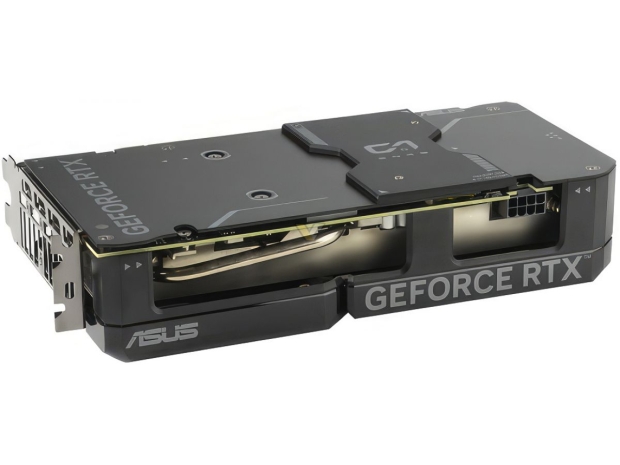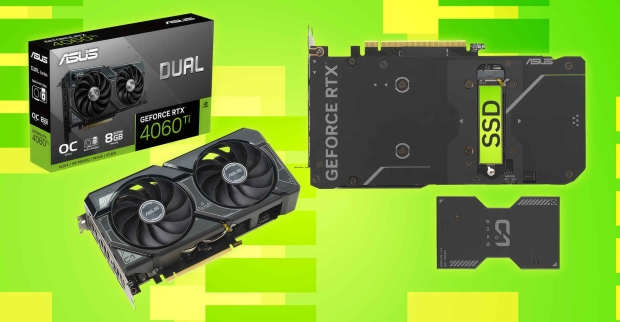We've been hearing about the ASUS GeForce RTX 4060 Ti graphics card with a built-in M.2 SSD slot, and now it's official: the new ASUS DUAL GeForce RTX 4060 Ti SSD graphics card is here.

The new ASUS DUAL GeForce RTX 4060 Ti SSD graphics card has a built-in M.2 SSD slot that will happily push over 6.5GB/sec sitting on the back of your GPU. You can use most PCIe 4.0 M.2 SSDs on the back of this card, enjoying that super high-performance NVMe SSD performance.
The card will support SSDs up to 80mm long, with the SSD transferring any heat generated into the card's own heatsink using a thermal pad, which provides a super-compact and neat-looking style. ASUS includes the M.2 Q-LATCH, which makes it easy to install or remote the M.2 SSD on the back of the ASUS DUAL GeForce RTX 4060 Ti SSD graphics card without needing any specific tools. There's a design that uses an easy-to-use simple locking mechanism to secure the drive, removing the need for any screws for the SSD.
- Read more: ASUS GeForce RTX 4060 Ti with built-in SSD is launching soon, interesting GPU + SSD combo

Here are the details included on Multitronic:
The ASUS Dual GeForce RTX 4060 Ti SSD graphics card takes compact gaming power and combines it with an all-new feature: a PCIe 4.0 M.2 slot integrated into the backside of the card, offering massive bandwidth for high-performance NVMe storage.
Built-in M.2 Slot
The backside of this graphics card integrates an M.2 slot capable of PCIe 5.0 speeds for high-performance NVMe storage devices up to 80 mm long the SSD transfers heat directly to the card's own heatsink using a thermal pad, resulting in a highly compact and tidy solution.
M.2 Q-LATCH
The innovative Q-Latch makes it easy to install or remove an M.2 SSD without the need for specific tools. The design employs a simple locking mechanism to secure the drive and neatly eliminate traditional screws.
Axial-tech Fan Design
Two tried-and-true Axial-tech fans feature a smaller hub that facilitates longer blades and a barrier ring to increase downward air pressure. Dual ball bearings can last up to twice as long as sleeve-bearing designs.



